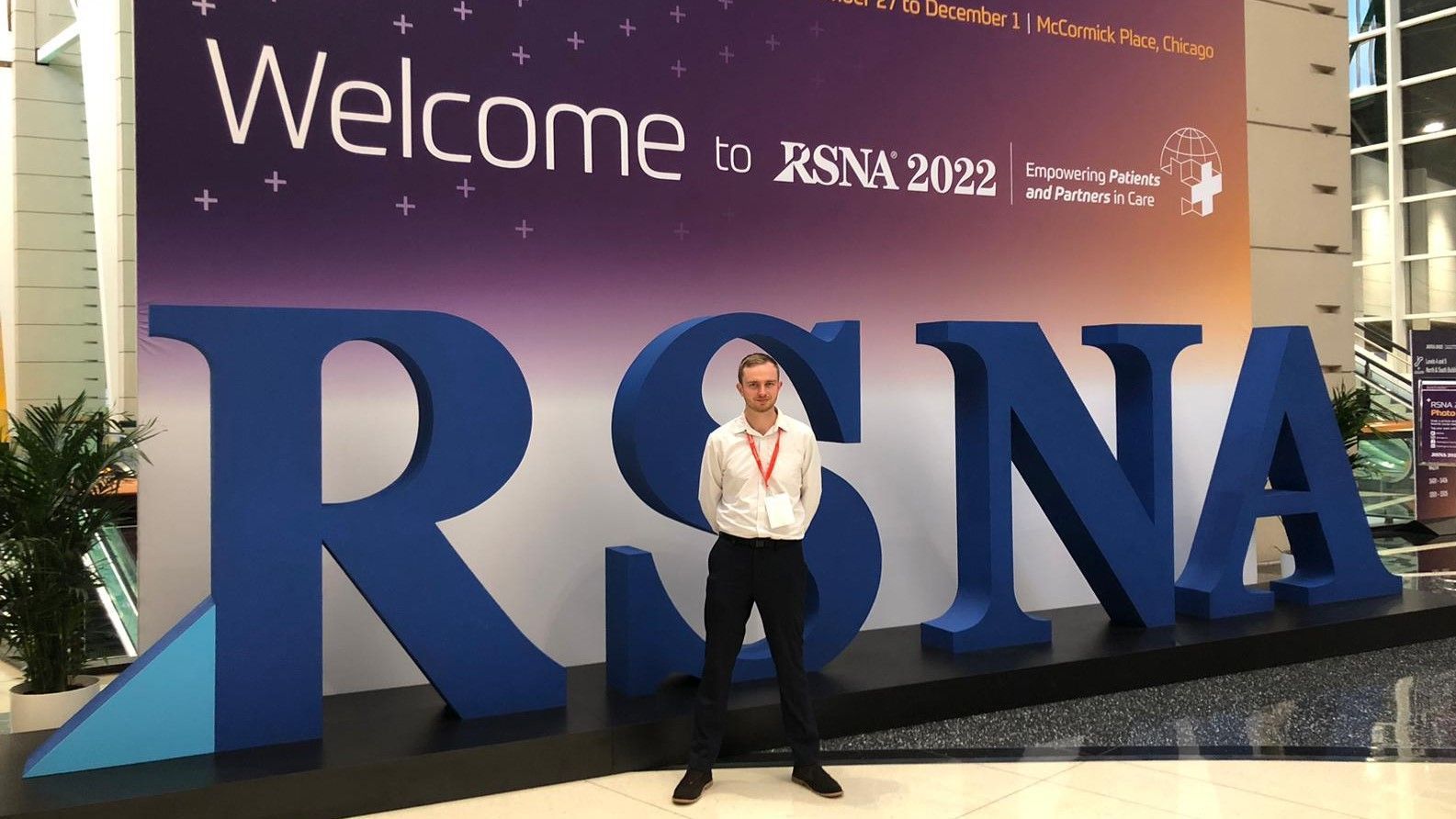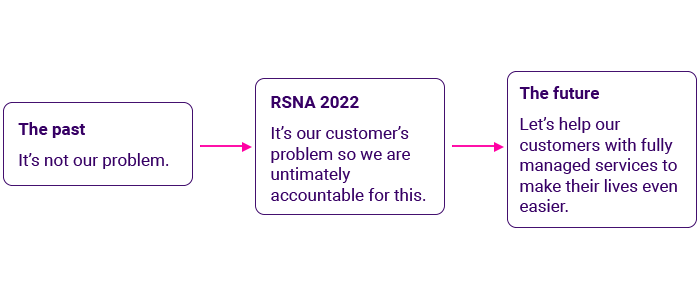
The RSNA Annual Meeting was very much back in business this year — with footfall, and exhibits, back to their pre-pandemic buzz. But there was one thing that had changed. And, I'm going to suggest that this trend will be indicative of the future of not just radiology, but also the wider healthcare technology roadmap.
The past: high availability is not our problem
Radiology vendors have historically been reluctant to get involved in conversations about high availability. After all, why would they? They spend millions on the Research and Development of cutting-edge applications that they are keen to provide to hospitals worldwide. What's high availability got to do with them? The short answer is 'nothing'. Traditionally, the customer would be advised to have their own high availability conversation with any of the vendors in the field.
So what's changed....?
RSNA 2022: high availability is our customer's problem
High availability has however always been a very real problem for their customers. After investing millions in the latest technology high availability has everything to do with their experience and ROI of that application. And where do hospitals feel that pain the most? On the frontline in their attempts to deliver a quality patient experience to as many users as they can.

So what happens when their super-expensive application crashes? The customer picks up the phone to their radiology vendor to complain. Does that mean it's the radiology vendor's fault? No, not usually. 9 times out of 10 the downtime of a radiology application has nothing to do with the application itself, and everything to do with user load on the network. Does the hospital care who's fault it is? No. Does the hospital want to get their application back online asap? Yes, absolutely!
As such, the conversations we had at RSNA this year indicated that the tide was turning, with radiology vendors increasingly looking at high availability solutions for the first time. Viewing them as a necessary element of the application that they needed to take accountability for. Because although traditionally it wasn't their issue to resolve, it very much a pain point for their customer.
As one vendor put it to me:
"At the end of the day, we want our customers to make the most of our technology. Leaving the customer to resolve high availability issues on their own, has actually resulted in more problems. So we are now looking for a standardized option we can confidently say works!"
This is clearly music to our ears because, as you'll know, here at Loadbalancer.org we've been banging on at health IT vendors about the importance of high availability for over a decade. And the vendors we've already worked with in that time have reaped the benefits of this approach. They've experienced benefits ranging from increased customer satisfaction and increased Net Promoter Scores (NPS) scores, to substantial reductions in the number and complexity of support tickets coming into their after-sales teams.
The future: how can radiology vendors better serve their customers
The final step, which some vendors have already taken, is for radiology vendors to take full control of high availability requirements for their customers by offering an end-to-end managed service. With a piecemeal application stack, hospitals are increasingly looking for platform-agnostic software, as well as a vendor-agnostic portal where they can manage their software estate through a single, vendor-agnostic portal. Impossible?
Watch this space...
Conclusion
High availability is a journey that radiology vendors would probably prefer not have to focus on. But if our conversations at RSNA 2022 are anything to go by, it's a road many are starting to turn down for the first time...

Thinking about high availablity? Start your journey.














